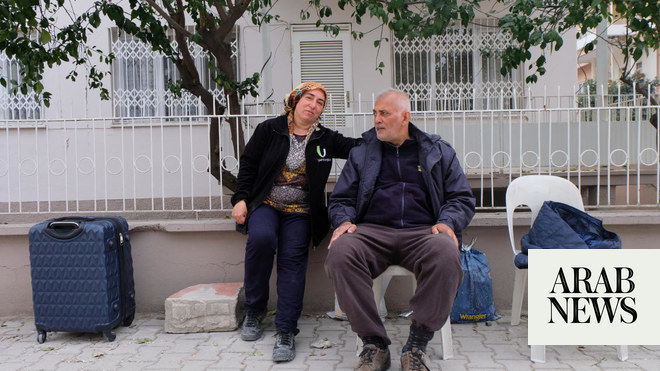
Returning home for a Palestinian Yarmouk camp refugee, today more than ever, has become a far-fetched dream. Statements made by Palestinian faction leaders testify to the extent of destruction stretching across streets and alleys.
So many returnees fail to recognize their homes and neighborhoods past the rubble.
Located eight kilometers from the center of Damascus, Yarmouk Camp was home to the largest Palestinian refugee community in Syria. However, in the aftermath of the Syrian war, most refugees were forced to flee.
Many returning Yarmouk Camp residents inspect their neighborhoods and homes from the streets, realizing how difficult the road to restoration will be.
A woman in her fifties, walking down the middle of her neighborhood’s streets reviews collapsed rooftops and crumbling houses with shock.
“Where is the Mahkama street? How is it that one cannot know his own home ... what happened!” she utters between lost breaths.
After a long struggle and some guidance, she was able to locate the rubble replacing what used to be her home.
She sat on a hill of rubble in front and stared with an empty gaze at what once was a building she lived in.
“Was it an earthquake?,” she exclaimed with dismay.
The woman refused all attempts on persuading her to leave the place and insisted on staying in a frozen moment of disbelief and eerie silence.
Last March, regime troops and their allies managed to regain control over the capital’s southern areas, which included the Yarmouk Camp.
Fierce clashes pitting regime troops against ISIS and Tahrir al-Sham armed combatants left the camp’s infrastructure virtually leveled.
This battle came along regimes efforts to secure Damascus’s environs, especially after settling any armed opposition issues in eastern Ghouta and Qalamoun districts.
Yarmouk Camp was established in 1957 on a small agricultural plot. Over time, it became one of the most popularly dense regional Palestinian refugee camps.
In a tightly packed 2.11-km square area, Palestinian refugees worked hard on improving their homes and buildings to accommodate large and growing families. The pre-war population count on Palestinian refugees residing in the camp was about 200,000 of a total 450,000 Palestinians distributed across 15 camps in six Syrian cities.
Some 400,000 Syrian citizens also lived in the Yarmouk Camp, leaving the spot with a total population of over 750,000 residents.
Buildings on both sides of the market seemed to be completely destroyed and turned into piles of stretching rubble, while streets and alleyways were removed from sight.
Celebrating the Islamic holiday Eid al-Fitr, camp residents coming back into the camp seized the opportunity to visit graves of family members and relatives south of the camp, as they had not visited them for over six years.
It is traditional to pay tribute, pray for and visit the graves of relatives during Eid al-Fitr.
But fighting had already left its scarring mark, leaving some graves unearthed, destroyed and unidentifiable.
A man in his sixties stood before the cemetery reciting prayers onto all graves. Finding solace in his recitation, he said: “the prayer will reach everyone, including our dead.”
Due to the massive destruction caused to the residential buildings, the commercial market in the main Yarmouk Street was hard to spot.
It is also near impossible to access secondary avenues in the main Yarmouk Street. A schools complex built by the United Nations Relief and Works Agency for Palestine Refugees was also completely destroyed.












